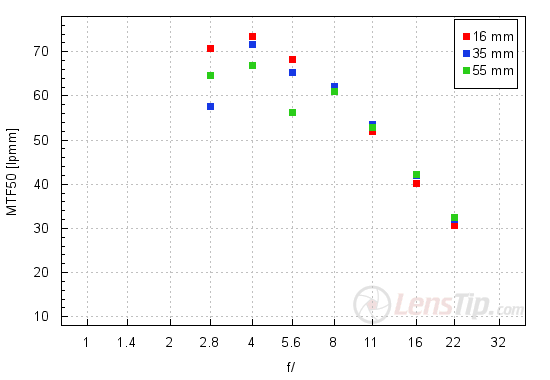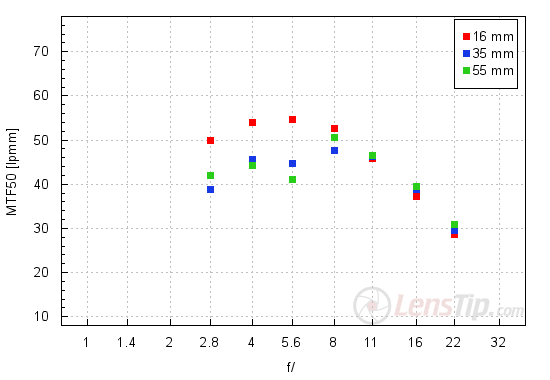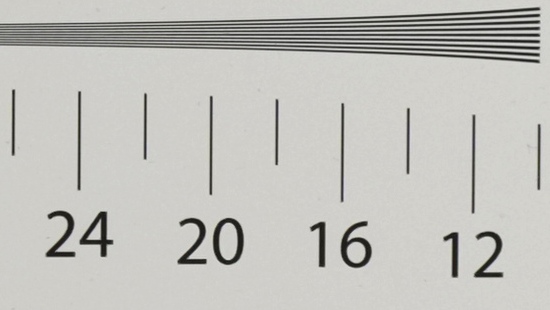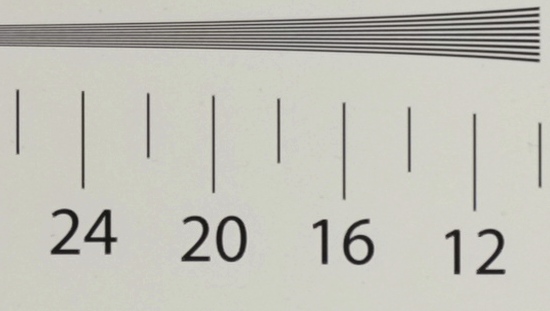Fujifilm Fujinon XF 16-55 mm f/2.8 R LM WR
4. Image resolution
Let’s remind here that the best fixed-focus lenses tested that way can reach results of 73-75 lpmm and the decency level is set near 42-43 lpmm. How the tested lens compares? An appropriate resolution graph for the frame centre at 16, 35 and 55 mm focal lengths is shown below.

The shortest focal length is truly sensational. Already at the maximum relative aperture you deal with MTF values a bit over 70 lpmm and by f/4.0 the result amounts to 73.4 lpmm. It is a value no top-of-the-range, fixed focal length lens would be ashamed off.
Please Support UsIf you enjoy our reviews and articles, and you want us to continue our work please, support our website by donating through PayPal. The funds are going to be used for paying our editorial team, renting servers, and equipping our testing studio; only that way we will be able to continue providing you interesting content for free. |
- - - - - - - - - - - - - - - - - - - - - - - - - - - - - - - - - - - - - - - - - - - - - - - -
The 35 mm focal length doesn’t differ much from the 16 mm in the range from f/4.0 to f/22. At the maximum relative aperture, though, the difference is noticeable – in the middle of the focal range it is worse than on both ends. It would be difficult to criticize the result of the lens - almost 58 lpmm – because the image quality still remains good.
Interesting things happen at the maximum focal length. By f/2.8 the result, amounting to almost 65 lpmm, is very good, not giving us any reasons to complain. When you pass to f/4.0 the performance becomes even better; still the situation is not as perfect as in the 16-35 mm range. By f/5.6 there is an untypical local minimum point. We couldn’t explain its provenance but one thing is sure – it is not a measurement error because that effect was visible very consistently on all resolution measurement charts we used in our test. The fact that a similar local minimum point we got some time back while testing one specimen of the Fujinon XF 18-55 mm f/2.8-4.0 is even more interesting.
Even taking into account untypical results we saw at the maximum focal length our overall assessment of the performance of the Fujinon 16-55 mm f/2.8 in the frame centre remains very high. The lens fared exceedingly well at all combinations of apertures and focal lengths; at the maximum relative aperture the situation was so good that the 16-55 mm model actually performed noticeably better than its cousin, the XF 50-140 mm f/2.8 R LM OIS WR which we also assessed pretty high in our test.
Now let’s check the situation on the edge of the frame – the appropriate graph is shown below.

It is clear that the producer saw to the shortest focal length the most, apparently assuming that in its case a good image quality across the whole frame is very important. Such an approach guarantees there are no weak points here. Already at the maximum relative aperture the MTFs reach 50 lpmm so the decency level is significantly exceeded. On stopping down the image quality improves even further.
The 35–55 mm focal lengths fare similarly well; what’s more, this time the local minimum point by f/5.6 is visible in both cases. It may be a result of quite fast changes in off-axis aberrations, connected to the aperture change - nobody is to say they have to decrease with its stopping down. As you can find out in the next chapter the lateral chromatic aberration, influencing significantly the image resolution after all, in some cases actually increases with the stopping down.
To sum up the performance at 35-55 mm on the edge of the frame is hardly impressive. In the aperture range from f/2.8 to 5.6 the MTFs border the decency level and only after employing f/8.0 you see truly good results.
Still it must be emphasized that for such lenses it is very difficult to get high resolution values on the edge of the frame. The Sigma 17–50 mm f/2.8 EX DC OS HSM, so praised by us, at the maximum relative aperture in the focal range from 17 to 30 mm landed firmly below the decency level and the Canon EF-S 17–55 mm f/2.8 IS USM by f/2.8 didn’t manage to get a fully acceptable image for any focal length at all. Compared to that the Fujinon fares really well!
At the end of this chapter traditionally we present crops taken from photos of our resolution testing chart, saved as JPEG files along with RAW files, used by us for the analysis presented above.
| X-E1, JPEG, 16 mm, f/4.0 |
 |
| X-E1, JPEG, 35 mm, f/2.8 |
 |






